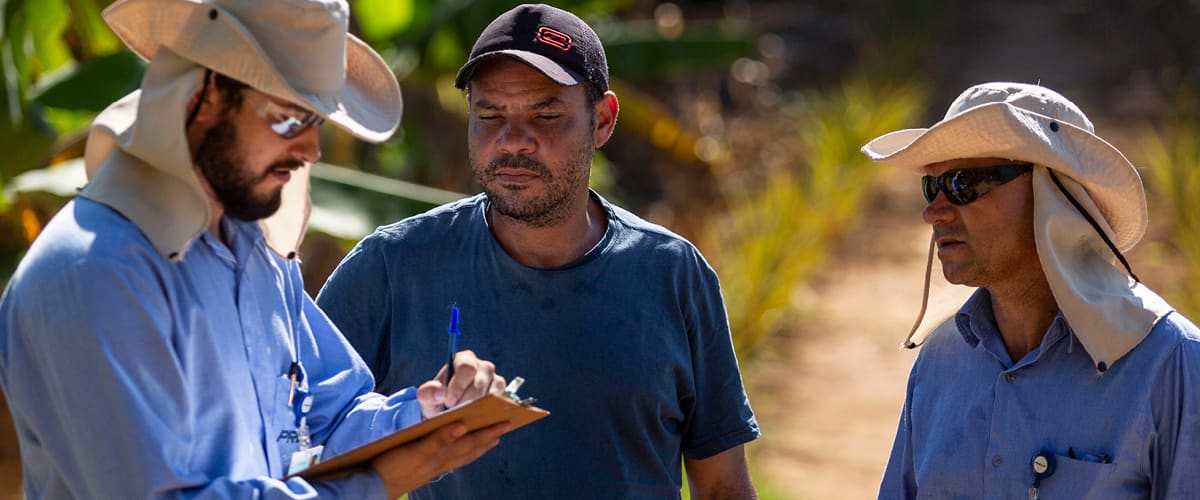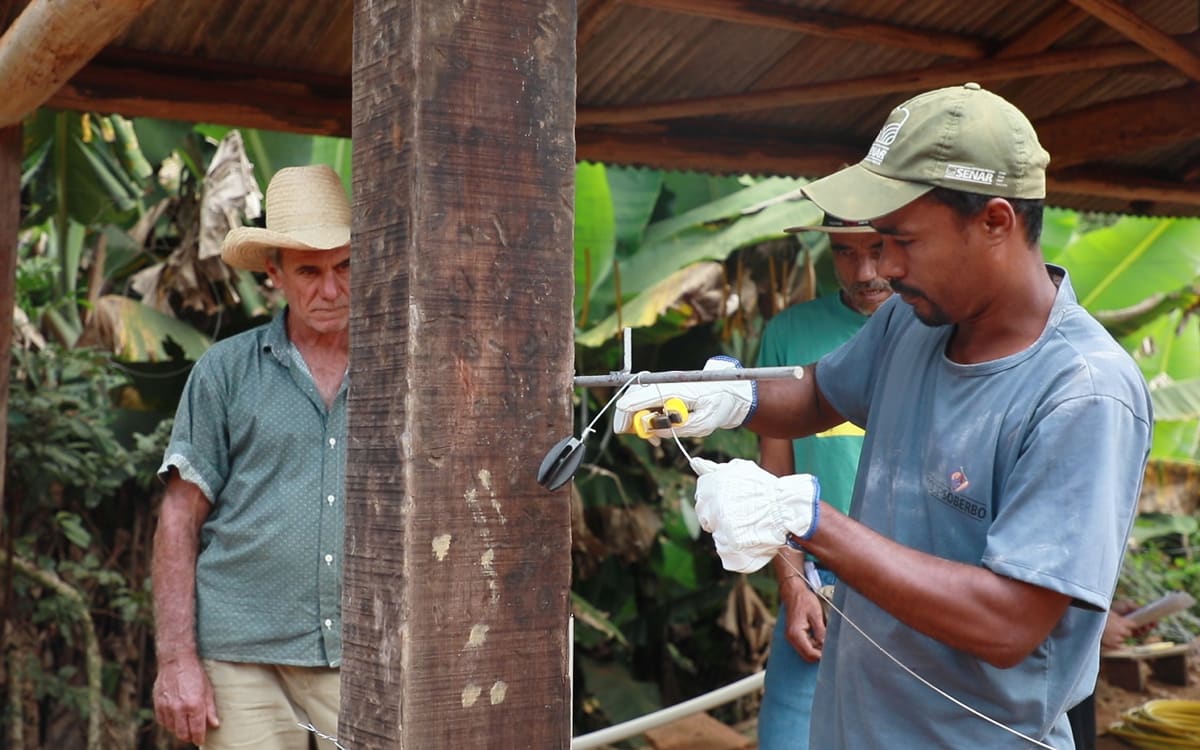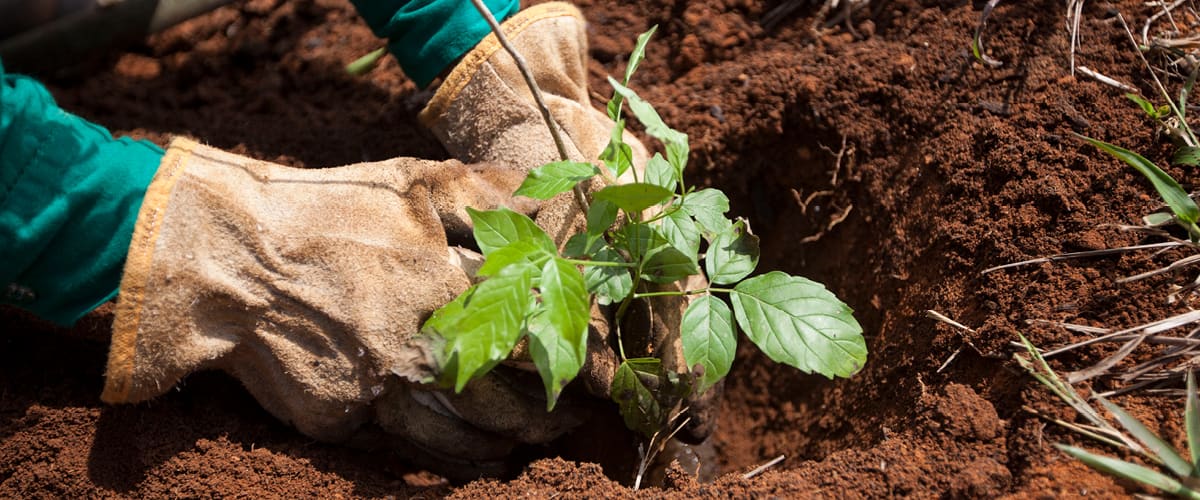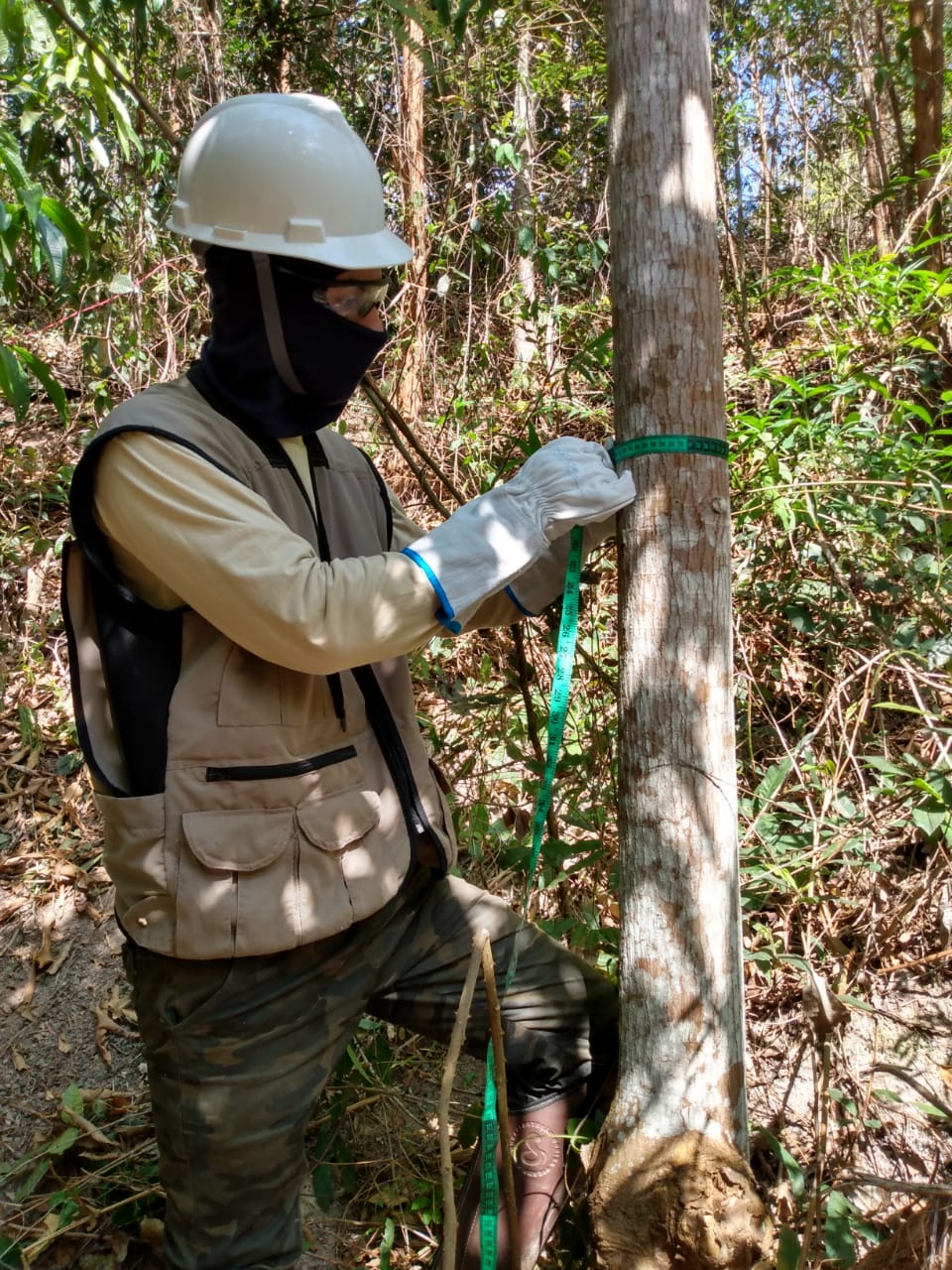Sustainable land use
RECOVERY OF DEGRADED AREAS
The recovery process of the areas impacted by the Fundão dam failure involved, at first, cleaning the gutters and stabilizing the riverbanks of the Gualaxo do Norte and Carmo Rivers, between Mariana and Santa Cruz do Escalvado (MG). In this stretch, the mud formed piles in narrower places, compromising the vegetation and the watercourses. To combat erosion and prevent the mud accumulated in the external part of the rivers from falling into the gutters, more than 800 hectares of fast-growing native species were planted in an emergency action.
In parallel, erosion control and riverbanks reconformation actions were carried out in an area of approximately 1.522 hectares – equivalent to 1.500 soccer fields – through bioengineering works. Sediment retainers, bio-blankets, bamboo bundles, rows of stones are among the resources used according to the characteristics of each location.
In the so-called flood plains (neighborhood of the riverbeds to the most distant point reached by the rivers in the floods), the drainage paths have been redone and the vegetation has been restored. This is a preparatory step for the restoration of the riparian forest – which protects the integrity of rivers – with the planting of native tree species.
About 113 tributaries were recovered, which are small rivers that feed the Upper Doce River. These tributaries disappeared from the landscape after the Fundão dam failure and, therefore, had to be completely redesigned based on geoprocessing information. The water has good quality indexes and presence of fish
AGREEMENT WITH MST
In August 2019, an agreement was signed between the Renova Foundation and the Francisca Veras Training Center, an organization of Governador Valadares formed by settled families and mediated by the Landless Rural Workers Movement (MST). The agreement will enable the forest restoration of 180 hectares of Permanent Preservation and Water Recharge Areas (APP/ARH) in four settlements of Minas Gerais, located at Santa Maria do Suaçuí, Periquito, Campanário and Jampruca.
The partnership will involve actions to mobilization, training and area fencing. The initial production forecast is about 285 thousand seedlings, among forest and agroforestry species, involving 200 families in the first moment. It is a pilot partnership for further future expansion in more than 340 hectares. The process is scheduled for conclusion on October 2020.
ACCELERATION OF BIODIVERSITY
A study led by Professor Maria Catarina Kasuya, a specialist in soil microbiology at the Federal University of Viçosa (UFV), proved that emergency revegetation, with the use of native species, accelerated the increase in the diversity of microorganisms in the soil. These microorganisms, properly isolated and in the form of substrate, allow the production of seedlings more quickly – which will support the work of the Renova Foundation in the reforestation process of the Doce River Basin.
The initial results showed that this methodology can significantly reduce the time required for seedling production in the nursery.
Three questions for Maria Catarina Kasuya
Right when the collapse happened, many people said that would not be possible to recover the environment. Is recovery possible?
Yes, recovery is possible. Our research shows that we can speed it up, too. I don’t know if we will get the initial conditions. Most of the areas that were directly affected by the mud already showed degradation before the collapse. But there is a possibility that nature will return to what it was before.
In what stage is your work with the Renova Foundation?
We are in the stage of distributing the substrate inoculated with microorganisms for the production of seedlings to the nursery. We are going to train nursery workers and, at the same time, develop these seedlings in the nursery and in the field. It is an integrated work with the community.
Which stretch will be prioritized first?
We are developing, mainly, for the first stretch, the Upper Doce River, which was directly affected by the mud. But nothing prevents the use of these seedlings for any area.
INTEGRATED REPAIR OF RURAL PROPERTIES
Renova Foundation supports rural producers who were impacted by the tailings flow through the implementation of a sustainable and economic production model which is suitable to the local reality.
Currently, 233 rural properties located in a stretch of 100 kilometres between the Fundão dam and the Risoleta Neves Hydroelectric Plant, are receiving actions to promote the resumption of their agricultural activities in a model which includes environmental recovery.
21 properties were selected as model farms and will house 25 Demonstrative Units (UDs), the result of a partnership between Renova Foundation, WRI Brasil, International Agroforestry Research Center (ICRAF) and Ecological Farm. They will be models of silviculture of native species, management of ecological pasture and agroforestry systems.
To implement the recovery actions, the Renova Foundation teams adopt a systemic view on rural property, considering the productive activity, but also the need to work on environmental adequacy according to the norms of the Brazilian legislation. Therefore, the work is broader than the damage direct repair from where the tailings went.
Among the solutions are the rational management of pastures with the improvement of the food quality for cattle breeding, the use and conservation of the soil with the construction of little dams (reservoirs to collect rainwater) in the pasture areas, the adequacy and improvement of rural structures and the installation of systems for the domestic sewage treatment.
To foster the actions integration, joint solutions were built with entities such as the Technical Assistance and Rural Extension Company of the Minas Gerais State (Emater-MG), the Agricultural Research Corporation of Minas de Gerais (Epamig) and the Federal University of Viçosa (UFV).
Approximately 594 hectares of impacted rural productive areas will be recovered. Another 2.559 hectares located in regions that have not been impacted (four times the extent of sites with tailings deposits) will be upgraded, expanding the region’s economic and environmental sustainability chain.
SOCIOECONOMIC AND ENVIRONMENTAL ADEQUACY PLAN (PASEA)
In September 2019, technicians from the Renova Foundation began visiting 168 rural producers to deliver individual recovery plans for each property, within the Socioeconomic and Environmental Adequacy Plan (PASEA). The properties had detailed action plans – the Executive PASEAs, which bring personalized actions to each one of the 168 producers.
The delivery process started in the cities of Ponte Nova, Rio Doce, Santa Cruz do Escalvado, Mariana and Barra Longa. At the feedback session, a booklet about the PASEA is handed to the producer and the actions that have already been taken to recover the property are showcased, in addition to those that are yet to come.
PASEA goal is to promote environmental adequacy, recovery of springs, degraded pastures and legal reserves, adequacy and improvement of rural structures such as barns and pigsties, installation of systems for the domestic sewage treatment, among other measures.
PASEA was developed through technical visits followed by the producers, to support them in the decision making regarding the planning, adaptation and regularization of their properties in line with the developed rural activities. About 200 producers agreed to participate in the initiative. The tool was created by the Secretary of Agriculture, Livestock and Supply of Minas Gerais (Seapa) and put into practice through a partnership between the Technical Assistance and Rural Extension Company of Minas Gerais (Emater-MG) and the Renova Foundation.
The actions have been taking place since 2017 and, until 2021, new activities will be carried out. In addition, producers will receive Technical Assistance and Rural Extension (ATER) until 2023. In all, 235 properties between Fundão and the Risoleta Neves Hydroelectric Plant (Candonga) are eligible for PASEA.
INITIATORS
PASEA was preceded by the elaboration and/or rectification of the Rural Environmental Registry (CAR), the performance of diagnoses through the application of the Productive Environmental Zoning (ZAP) methodologies and Agro-ecosystem Sustainability Indicators (ISA), the latter applied between 2017 and 2018 through field visit, collection and analysis of soil and water, and application of a questionnaire that evaluated 21 indicators in each property, detailing the social, economic and environmental characteristics, such as the level of training of workers and productivity.
The focus of the program will be to reach the ISA sustainability threshold (0.7) with a reassessment every two years to review action plans and monitoring families through Technical Assistance and Rural Extension (ATER) technicians.
Two questions for Ricardo Sávio do Carmo, rural producer in the community of Chopotó, municipality of Ponte Nova
Do you believe that Pasea will improve your property and production processes?
Yes. It will get better because, after this plan, we will have to take better care of everything inside the property. We will have to keep doing, for example, the fencing of springs, keep renovating the fences. We have to understand that, after the improvements are concluded, we cannot let them go bad. We performed a lot of enhancements and it was a big help to us.
What has changed on your property?
Renova Foundation designed the little dams to hold rainwater, and this will help a lot. Prior to that, the water went downstream, opening a crater until it reached the river. Now, the water is trapped inside the little dam. The trees the Renova Foundation plants on the riverbanks will establish the soil, and that is also a good thing. The Renova Foundation conversations are very productive. They provide us the ideas, we think it is good and implement it, like planting more trees near the springs. I believe that if everyone works and plays its role, it can’t go wrong.
TECHNICAL ASSISTANCE AND RURAL EXTENSION (ATER)
During the entire process of rural properties’ integrated repair, Technical Assistance and Rural Extension (ATER) services will be provided to resume agricultural activities. The first 5,6 thousand hours of assistance were carried out by Renova Foundation teams on rural properties reached between January 2017 and August 2019.
The goal is to promote the conservation of natural resources, sustainable production practices and direct support to families in the management of property and products commercialization, complementing the integrated vision of the Socioeconomic and Environmental Adequacy Plans (PASEAs) built in a medium and long-term perspective.
In September 2019, the works between Mariana and Rio Doce were initiated. The forecast is to close in 2023 with 210 families served. Between Rio Doce and Linhares (ES) technical assistance services will also be provided from 2020, until at least 2023.
The entities are selected through public notices giving prioritizing to local institutions. In order to strengthen ATER, partnerships are also established with relevant actors on the topic, such as Emater (Company of Technical Assistance and Rural Extension of the State of Minas Gerais), Federal University of Viçosa and state secretariats of agriculture
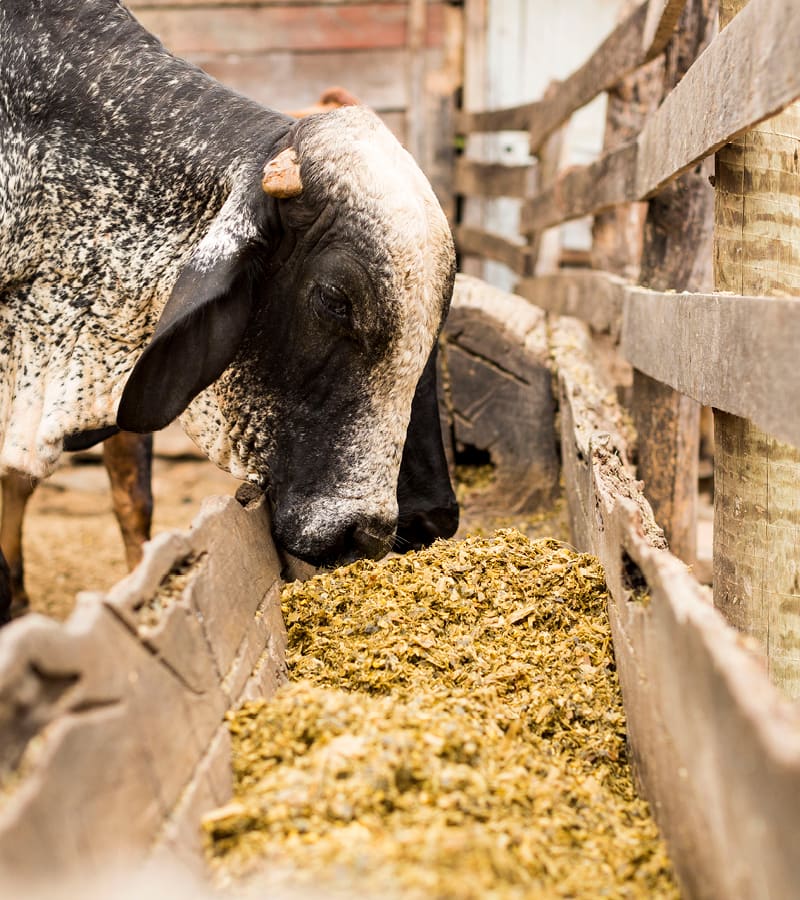
Renova Rebanho is one of the projects that combines artificial insemination technology with management techniques in the properties participating of the repair actions. Until December 2019, 194 visits were conducted to rural properties located in Mariana, Barra Longa, Ponte Nova, Santa Cruz do Escalvado, Acaiaca and Rio Doce, Minas Gerais. More than 1.000 animals have been inseminated
FOREST RESTORATION
In September 2019, the first phase was initiated of the recovery planting for 40 thousand hectares of Permanent Preservation Areas (APPs) and water recharge in the Doce River Basin, located in Minas Gerais and Espírito Santo.
The initial action foresees planting in 800 hectares or 800 soccer fields, which is equivalent to five times the area of Ibirapuera Park, in São Paulo, one of the largest urban parks in the country.
The forest restoration program is considered one of the largest ever carried out in a hydrographic basin in the world and will have investments of around R$ 1.1 billion.
This phase is expected to be conducted until February 2020, during the rainy season. The municipalities of Governador Valadares, Coimbra, Periquito and Galileia, in Minas Gerais, will be contemplated; and Colatina, Marilândia and Pancas, in Espírito Santo.
Around 800 thousand seedlings of Atlantic Forest species will be used. The seedlings were produced in partnership with 10 nurseries in the upper, middle and lower part of the Doce River Basin.
The measure is part of the scope of the compensatory actions taken by the entity, since the area to be restored was not directly affected by the tailings. The entire reforestation of the 40 thousand hectares will last for 10 years. The action cost is expected to reach R$ 1.1 billion.
Renova Foundation mobilized rural producers and communities to work on these first hectares of planting. The initiative is part a partnership with the World Wildlife Fund Brasil (WWF-Brazil), which developed a large-scale forest recovery project specific to the Doce River Basin.
Seedling planting began in September in regions where the streams supplying the Doce River Basin are born.
REGIONAL MANAGEMENT UNIT (UGR)
The UGR is a working group that aims to contribute to the expansion of the institutional performance of the Renova Foundation. The proposal is to strengthen the dialogue between the Foundation and rural producers located in the Doce River Basin, in order to increase the capillarity of the forest restoration program. The group is made up of representatives from various agencies in the areas of agriculture and the environment of the governments of Minas Gerais and Espírito Santo, in addition to the Doce River Basins Committee, Ibama, Forest Restoration Technical Chamber and federations of Espírito Santo and Minas Gerais workers and farmers.
The main points handled by the UGR are Payment for Environmental Services (PSA) in the basin, forest restoration and spring recovery programs, in addition to the dissemination, access and engagement strategies of the rural producer to the socio-environmental initiatives which are being developed. UGR will be divided into local units, or subgroups, working together with affluent committees – institutional working groups gathered along the Doce River Basin, in conjunction with local governments, associations and unions.
Learn more about forest restoration
SPRING RECOVERY
Springs have a fundamental environmental role in the recovery of a river and even of a watershed. If they are preserved, there are good chances of restoring degraded areas, not only rescuing terrestrial and aquatic biota, but also guaranteeing the quality of the water collected for supply and consumption.
The Spring Recovery Program, which is in its third year, aims to recover 5 thousand springs in 10 years, through the planting of seedlings and natural regeneration. The infiltration of water in the soil and drainage improve the health of the water in the river, and planting, by providing the soil with enough conditions to retain rainwater, protect the sources and favor forest regeneration.
This work front mobilizes, engages and qualifies rural producers so they act with the springs’ recovery. The goal is to support the technical recovery while adapting the properties for the environment aspects, incorporating the best socio-environmental practices for agriculture, forestry and livestock.
In 2019, of the 500 springs planned to be recovered, 350 are in Minas Gerais (100 in the Piranga basin and 250 in the Suaçuí basin) and 150 in Espírito Santo. In Minas, properties in the cities of Sabinópolis, Virginópolis, Guanhães, Governador Valadares (districts of São Vítor, Penha do Cassiano and Córrego dos Melquíades), Resplendor and Ponte Nova will receive project actions. In Espírito Santo, the selected locations are Marilândia, Colatina and Linhares.
PAYMENT FOR ENVIRONMENTAL SERVICES (PSA)
Payment for Environmental Services (PSA) was the chosen tool by the Renova Foundation to support and encourage the recovery of 40 thousand hectares of Permanent Preservation Areas (APPs) and 5 thousand springs in the Doce River Basin, over a 10-year period.
The core idea of the PSA is to remunerate conservation and restoration actions. The lawsuit is defended by the National Water Agency (ANA), according to which the rural producer deserves to receive financial compensation when they adopt measures that protect springs and water sources on their properties.
The rural owner or holder will be responsible for maintaining the areas covered by the program for a period of five years. The public notice predicts the producer also plants native forest species and implement soil and water conservation projects in productive areas.
In July 2018, the first PSA public notice was launched. The 270 owners who signed up were eligible for the program.
Between August 5th, 2019 and January 1st, 2020, Renova issued a second notice for rural producers’ adhesion to the Forest Restoration Program.
In addition to the payment of PSA, this public notice included support in the CAR registration, construction of water fountains or provision of an exclusive livestock area. Its goal is to recover 500 springs in the Pontões, Suaçuí and Piranga basins between the years 2019 and 2020; and a thousand hectares of degraded areas located within Permanent Preservation Areas (APPs) or Water Recharge Areas identified as priorities in the Manhuaçu and Guandu river basins.
In the coming years, other public notices will be launched to contemplate different basins important for the recovery of the Doce River
Understand how Renova Foundation’s Payment for Environmental Services (PSA) works
FIRST PAYMENTS
In late November 2019, the first payments were carried out to producers who joined the PSA. Payments are made according to the size of the area available for forest restoration. The amount of R$ 252 hectare/year will be transferred to each rural producer.
If the producer makes one hectare available for restoration, he will receive R$ 252 per year for five years; if another producer makes four hectares available, he will receive R$ 1.008 per year for five years. The total transfer of R$ 1 million is estimated by the end of the contracts.
FOREST INVENTORY
Renova Foundation is carrying out a study called Forest Inventory which assesses the biodiversity of flora, soil conditions and the landscape in the areas of springs, riverbanks and water recharge in the Doce River Basin. Data such as tree height, diameter and species types are mapped, creating parameters which will allow the analysis of the structure, composition and vitality of forests.
Botanical and soil collections, tree measurements, and interviews with residents and farmers are conducted. The trees evaluated are marked with plates and their information will be filed by QR Code. The goal is to create reference ecosystems to guide restoration actions. From these analyses, forest restoration indicators and subsidies for the formulation of public policies will be generated, which aim the sustainable use, recovery, and conservation of forest resources.
PACT FOR THE ATLANTIC FOREST
In 2019, a partnership was consolidated between the Renova Foundation and the Pact for the Restoration of the Atlantic Forest. The pact is made up of organizations which work at the Atlantic Forest with the goal of making the restoration of 15 million hectares possible by 2050, improving forest restoration techniques and disseminating the actions developed throughout the region, through the coordination and integration of efforts and actions of its more than 260 members.
In order to establish sustainable and economically viable landscapes, the partnership agreed between the Renova Foundation and the Pact for the Atlantic Forest foresees that all forest restoration actions carried out by the Foundation in the biome make part of the Pact’s initiatives. The adhesion to the partnership will not involve financial resources and foresees the construction of reports on the areas restored by the Renova Foundation, contributing to the fulfillment of the joint goal.
